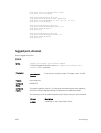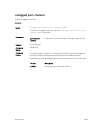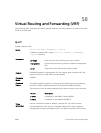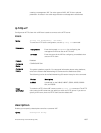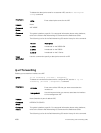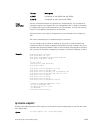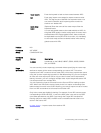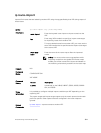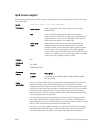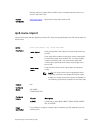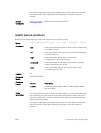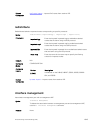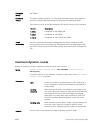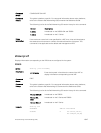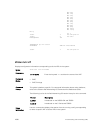ipv6 route-export
Enables route leaking between VRFs. Exports or shares IPv6 routes corresponding to one VRF with other
non-default VRFs.
Syntax
ipv6 route-export tag [route-map-name]
Parameters
route-export Enter the keyword route-export to leak or share routes
between VRFs.
tag Enter a tag (ASN number) as the export route target to
expose routes to other VRFs. This tag acts as an identifier for
exported routes. You can use this identifier while importing
these routes into another non-default VRF.
route-map-
name
(Optional) Enter the name of the route-map to filter the
exported routes. You can leak global routes to be made
available to VRFs. As the global RTM usually contains a large
pool of routes, when the destination VRF imports global
routes, these routes will be duplicated into the VRF's RTM. As
a result, it is mandatory to use route-maps to filter out leaked
routes while sharing global routes with VRFs.
Defaults N/A
Command
Modes
VRF MODE
CONFIGURATION
Command
History
Version Description
9.7(0.0) Introduced on the S4810, S4820T, S5000, S6000, S6000–
ON, and Z9500.
Usage
Information
You can use the ip route-export tag command without specifying the route-map
attribute to export all the routes corresponding to a source VRF. This action
exposes source VRF's routes to various other VRFs, which then import these routes
using the ip route-import tag command. In Dell Networking OS, you can configure
at most one route-export per VRF as only one set of routes can be exposed for
leaking. However, you can configure multiple route-import targets because a VRF
can accept routes from multiple VRFs.
You can expose a unique set of routes from the Source VRF for Leaking to other
VRFs. When two VRFs leak or export routes, there is no option to discretely filter
leaked routes from each source VRF. Meaning, you cannot import one set of routes
from one VRF and another set of routes from another VRF.
Only Active routes are eligible for leaking. For example, if one VRF has two routes
corresponding to BGP and OSPF, in which the BGP route is not active, the OSPF
route takes precedence over BGP. Even though the Target VRF has specified
1842
Virtual Routing and Forwarding (VRF)



